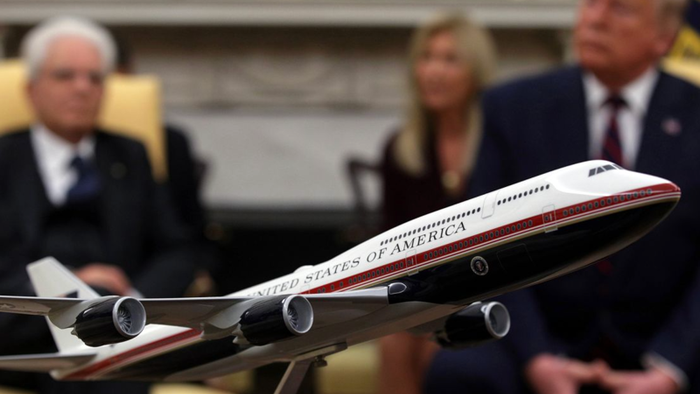Boeing, the renowned aerospace manufacturer, has faced significant challenges in delivering new Air Force One aircraft, as highlighted by a recent Wall Street Journal report. The company has attributed these delays to supply chain issues, ongoing inflationary pressures, and workforce difficulties. As a result, the expected delivery timeline for the two new Boeing 747-8 planes has been pushed back considerably, with projections suggesting that they may not be ready until 2029 or later. This news is particularly disheartening for President-elect Donald Trump, who had anticipated using the updated aircraft during his potential second term. Trump’s frustration with the situation has been evident, marking a stark contrast to his previous experiences with Boeing.
In discussions regarding the delays, Trump has expressed his concerns to Boeing’s CEO, Kelly Ortberg. Their conversation took place in November and highlighted Trump’s dissatisfaction with the pace of production. As Trump prepares to potentially reclaim the presidency, he has actively sought updates from his advisors about the situation with Boeing. His remarks reflect a broader sentiment of disappointment, as he appears to long for the high standards associated with Boeing in prior years. Trump’s criticisms include a sense of nostalgia for a time when Boeing was viewed as a quintessential American company, indicating a significant shift in perceptions about the aerospace giant.
Boeing was initially awarded a substantial contract worth $3.9 billion in 2018 during Trump’s first term, with plans to construct two new Air Force One aircraft intended for delivery by the end of 2023. However, the combination of complex engineering challenges and external factors has led to unforeseen delays, prompting Ted Colbert, head of Boeing Defense, Space & Security, to publicly acknowledge the difficulties the company faces. Colbert emphasized the complexity of the program and the significant investment made in workforce training and efficiency improvements to combat these issues.
While Trump’s administration initiated the project, the delivery timeline seems increasingly unattainable. The current administration has also added to the project’s complexity by reversing changes to the aircraft’s livery. In 2023, the Biden administration opted to return to the traditional red, white, and blue color scheme, departing from the design introduced during President John F. Kennedy’s era. This decision, coupled with the existing challenges in aircraft production, has contributed to the overall delays in the project, raising questions about Boeing’s operational efficiency and its ability to meet contractual obligations.
The Wall Street Journal’s report underscores the unusual dynamics that surround the build process of such highly anticipated aircraft. The publication notes that these delays are particularly surprising given that Boeing is not constructing the planes entirely from scratch, which raises questions about its project management capabilities. The difficulties experienced by Boeing serve as a case study in the broader context of manufacturing in the United States, where companies are struggling to navigate a post-pandemic economic landscape characterized by increased demand, supply chain disruptions, and ongoing workforce challenges.
Ultimately, the scenario presented by Boeing’s predicament illustrates the interplay between governmental leadership, corporate responsibility, and expectations for American manufacturing. As Trump continues to express his dissatisfaction with Boeing’s performance, the aerospace manufacturer finds itself at a critical juncture. The company must work diligently to resolve its internal challenges while also managing the external perceptions of its reliability and effectiveness—an essential aspect of its role as a key player in U.S. defense and aerospace markets. As the timeline for the new aircraft extends into the latter part of the decade, both Boeing and the U.S. government face pressure to address these issues swiftly to restore confidence in this iconic symbol of presidential power and national pride.

